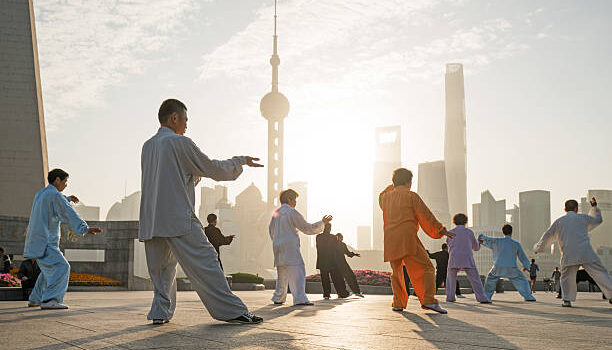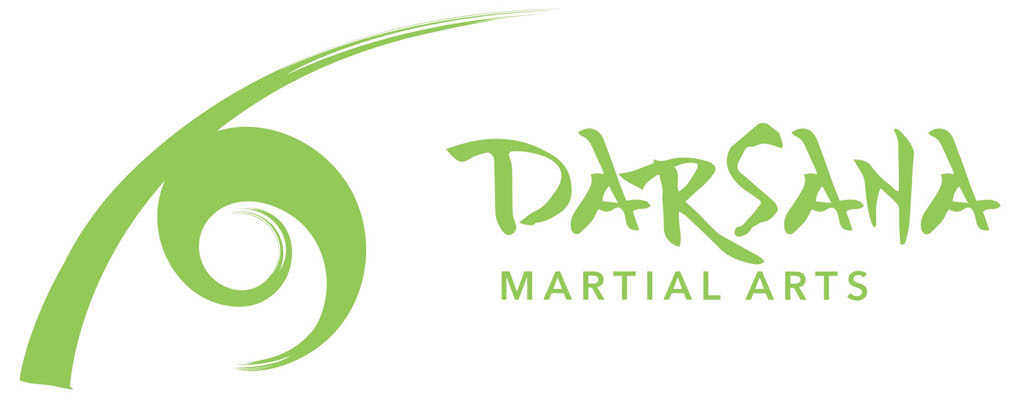
I’ve been asked by several people what they should expect to get from of their Tai Chi practice, or similarly, how can they track their progress. I find these questions surprisingly difficult to answer. On one hand, the answers are so obvious to me. On the other hand, Tai Chi seems to confound suitable explanations. Still, as I have chosen the profession of Tai Chi teacher, I feel I have a responsibility to articulate what it is, what the practice is aimed at cultivating, and how one can mark their progress. Finally, I hope to encourage you to embark on the long and rewarding journey of Tai Chi practice or at least to give it a try.
Experience has shown me that most people come to Tai Chi under the relatively vague impression that it is a form of exercise. That’s understandable. Tai Chi is a centuries old practice from a very different culture on the other side of the world. They quickly find, however, that it does not conform to their common sensibilities about exercise. It’s not especially strenuous, neither on the cardio system nor on the muscular system (burning thigh and shoulder muscles not withstanding). Those who seek it out as a martial art have trouble imagining how it’s slow movements could ever translate into something applicable to fighting. And those hoping for relaxation and meditation often say they feel good afterward, but they show a veiled confusion over the complexity of the movements and how the work in the legs and shoulders are meant to aid relaxation. It seems that students finishing their first class often feel a bit bewildered about what they just did. The total effect is that many walk away from their first Tai Chi experience thinking that it was interesting but strange, and they don’t know where it fits into the exercise, martial arts, or wellness boxes they understand. If you are one of those people, I’m here to tell you that’s entirely okay. Tai Chi is unique. It’s a mixture of all those things, and at the same time, it’s different and more. It’s also a philosophical perspective and even a spiritual path. It is a bit like art, love, and life experience – something most people will need to be taught to recognize and appreciate, and it will take time. Perhaps, this introduction can serve as the first step in that process for you.
1. What is tai chi?
This should be the easiest question to answer, but in a way, it’s also the hardest. Tai Chi resists simple categorization. Let’s explore it’s dimensions with a bit of Q&A…
Is Tai Chi a form of exercise? Yes, after a fashion. It rectifies the musculo-skeletal system into a more balanced, integrated, and smooth vehicle free of binding tension. Studies have identified a number of health benefits associated with the practice, and it is one of the more accessible activities for those facing physical limitations.
Is Tai Chi a martial art? Yes, though it’s martial applications can take a long time to cultivate. It relies far more upon specialized body-qualities cultivated over many hours of practice, rather than a list of techniques learned sequentially. That’s not to say it is without specific fighting methods, though, but that these methods rely heavily on Tai Chi’s unique body-qualities.
Is Tai Chi a form of meditation? Yes. There are both still and moving meditative practices in Tai Chi. Tai Chi primarily focuses on what you might call “embodied meditation,” that is, meditation that focuses attention on subtle bodily states.
Is Tai Chi a philosophy? In a manner of speaking. It is a principle which encompasses a way of understanding things that informs our perceptions, choices, and actions.
Is Tai Chi a spiritual path? It can be, if approached as such. Through a deep attentiveness to our physical state and actions, Tai Chi reveals principles of harmonious relationship and our connection to all things, including the deeper aspects of our selves.
Does Tai Chi relieve stress? It can be a powerful vehicle for relieving stress in both the body and the mind. Tai Chi calls us to examine the sources and processes of our thoughts, feelings, behaviors, and actions and shows us how to cultivate equanimity in our mind as it teaches us to find equilibrium in our bodies. It encourages us to slow down and act from a place of calm and clarity.
Hopefully, these answers help to illustrate the depth, complexity, and richness of Tai Chi practice, and why defining it in simpler terms would diminish its value. That said, I realize it’s helpful to have a more concrete picture of the practice.
Tai chi is primarily practiced through a series of movements called forms. These movements often appear like a slow, martial arts styled dance. There are many important details to be followed during their execution, which are added in layers of instruction as a student advances. Ultimately, these movements are performed from the inside out, beginning with the mind’s intention, which becomes subtle internal motion in the body. That internal motion is then expressed as external movement. Other important aspects of practice include standing stillness postures, which are used to promote the internal transformations of our bodies as well as cultivating stillness of mind, and partner practices, which help bridge the gap between internal development and external action and illuminate Tai Chi’s approach to relationship and conflict resolution.
2. What will tai chi do for me?
A lot — some of which has been indicated above. Physically, one of the first benefits one will likely notice is a relief of joint stiffness and increased mobility. Even those without obvious tension will discover new dimensions of mobility. Improved body awareness will be a continually increasing benefit. Posture and balance will improve, and overall body-mechanics will become smoother and more efficient. This will evolve into a fluidity of motion unique to Tai Chi. The lower body especially will become more solid and stable, and the physical strain of weight bearing activities will be dispersed more efficiently throughout the body, making them less strenuous — effectively increasing functional strength through better leverage and inclusive use of the whole body and mind. Respiration often improves as well — both in ease and fullness. Reflex and reaction speed may improve, and a general sense of physical well-being may occur. If you are a martial artist, the stability (often called “rooting”), mobility of the joints, elasticity of the tissues, sensitivity, coordination, and whole body involvement one develops through Tai Chi practice can greatly improve your wrestling, grappling, joint locking, and overall power. Mentally, you will find yourself less disturbed by unpleasant events, aggressive behavior, and challenges. You will become more aware of your own emotional responses and better able to remain calm in difficult situations. You may also become more able to be present and focused, and gain greater clarity about circumstances and your place in them. Like most things, the benefits Tai Chi can provide are not automatic, but instead are proportional to the time, effort, and attention one puts into the practice and the skill one acquires.
3. How do I mark my progress/How do I know I’m improving?
The answer to this question is in some ways more straight forward than the others. In the beginning, a student is learning the postures and movements – the outer shape of the practice. At this stage, merely assuming the correct positions and memorizing the sequences of movements are important steps of progress. The forms and postures are the primary vehicles for cultivating the internal qualities we seek in Tai Chi, so they must be learned. As these become more familiar, the simple act of performing them while aiming to be more and more relaxed and fluid can provide a meaningful meditative experience. Being able to perform the movement sequences like this is the first major benchmark of progress in Tai Chi. Later, higher standards of subtlety and precision are required for alignment, relaxation, and body-mechanics. These are methodically and meticulously applied over time under the guidance and scrutiny of a competent teacher until they begin to produce qualitative changes in both your body and movements. These qualitative changes will be described by the teacher in depth and detail throughout this period of training, with explanation of what to look for (or feel for) to mark progress. As the student progresses into the next level, inner feelings and the movement of internal forces begin to take the foreground of progress, and this is the territory in which things must be directly experienced to be understood. Partner practice and specific testing exercises serve as the measure of progress at this point, as will the student’s own internal experiences. Eventually, those experiences will become clear, self-validating evidence of progress, and will provide the motivation to deepen one’s practice further.
4. How long will it take for me to get good at Tai Chi?
I’ll start with a common parable from the martial arts: a man who wished to learn the master’s art approached him and asked how long it would take him to achieve proficiency. The master answered that it would take ten years. The man was taken aback and asked how much time would it take if he trained several hours each day. The master answered that it would take twenty years. Confused, the man asked how long it would take if he lived at the master’s school, and fully dedicated himself to the art from sun up to sun down. The master replied that in such a case, it would take thirty years. Discouraged, the man gave up his ambition and left the master.
The moral of the story is that some processes can not be expedited. They must proceed and mature in their own natural time. Tai Chi is like this, and while it is helpful to practice daily, growth can not be hastened with more and more or harder and harder practice. How quickly one progresses relies upon all the ordinary factors: the teacher’s ability to convey the proper methods and concepts, the student’s natural talents, dedication, and discipline, the frequency of lessons and personal practice, and of course the time it takes for one’s body and mind to be transformed by the training. The main take away is that, whatever your rate of progress, consistent lessons and practice will lead to consistent steps toward the goal of embodying the Tai Chi. To give a more concrete range, three to six months of consistent training will likely produce visible progress, mostly in the external shape of the practice. In roughly three years, a student can expect to have achieved a fair bit of skill and body-conditioning for the art and have a solid understanding of the qualities they are pursuing. In about five years, a student may reach a very respectable level of skill, which is readily visible and felt by those they interact with. Beyond that, one progresses in accordance with their passion, patience, and perspective.
I hope this article has helped shed a little light on the mystery of Tai Chi practice and progress for you. If nothing else, perhaps it has shown you that Tai Chi is a unique practice, which shares many qualities with its more recognizable cousins, such as kung fu, yoga, meditation, etc., but is not quite like any of them, that is to say, there is nothing quite like Tai Chi. I hope you are encouraged to give this strange, unique, wonderful, and endlessly deep practice a try, and perhaps, to embrace it as a vehicle for your own personal growth.
